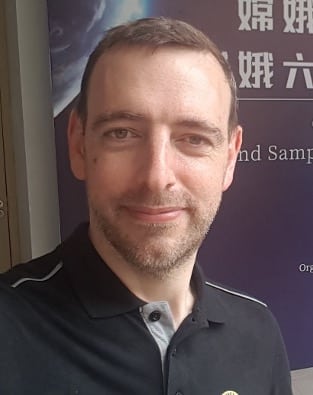- Planet
- Energy
- Health and biotech
- Digital
- Space
- Economics
- Industry
- Science and technology
- Society
- Geopolitics
- Neuroscience
- Videos
- Magazine


Pierre-Yves Meslin is a lecturer at Université de Toulouse in the physics department and a researcher in planetology at IRAP (Institut de Recherche en Astrophysique et Planétologie). He graduated from the ISAE/Supaero school in Toulouse in 2003, and then obtained a Master's degree in planetary atmospheres and the space environment from University of Michigan. He obtained his PhD from Université Pierre et Marie Curie in Paris in 2008, and completed his thesis in planetology at IRSN (Institut de Radioprotection et de Sûreté Nucléaire), which focused on the discovery and study of radon and polonium in the atmosphere of Mars.
Since joining IRAP planetology team in Toulouse in 2010, he has been studying the geochemistry of the surface of Mars and the interactions between the Martian surface and atmosphere. More specifically, he is working on ChemCam (on board the Curiosity rover) and SuperCam (Perseverance rover) Mars projects, which measure the chemical and mineralogical composition of Martian rocks. He is also studying the transport of gases and aerosols in regoliths and planetary atmospheres (on Mars, the Moon and Mercury, but also in the terrestrial environment), using radioactive tracers among other things. To carry out these measurements, he participates in the development of space instruments dedicated to planetary exploration, working closely with engineering teams from IRAP, CNES and other laboratories.
Since 2019, he has been the scientific manager of DORN experiment, the first French instrument to be deployed on the lunar surface in June 2024 on board the Chinese lunar mission Chang'E 6. This instrument, which mobilised some twenty engineers at IRAP for almost 4 years, was designed to study the origin and dynamics of the lunar atmosphere, by measuring radon and polonium, two radioactive tracers, on the lunar surface.